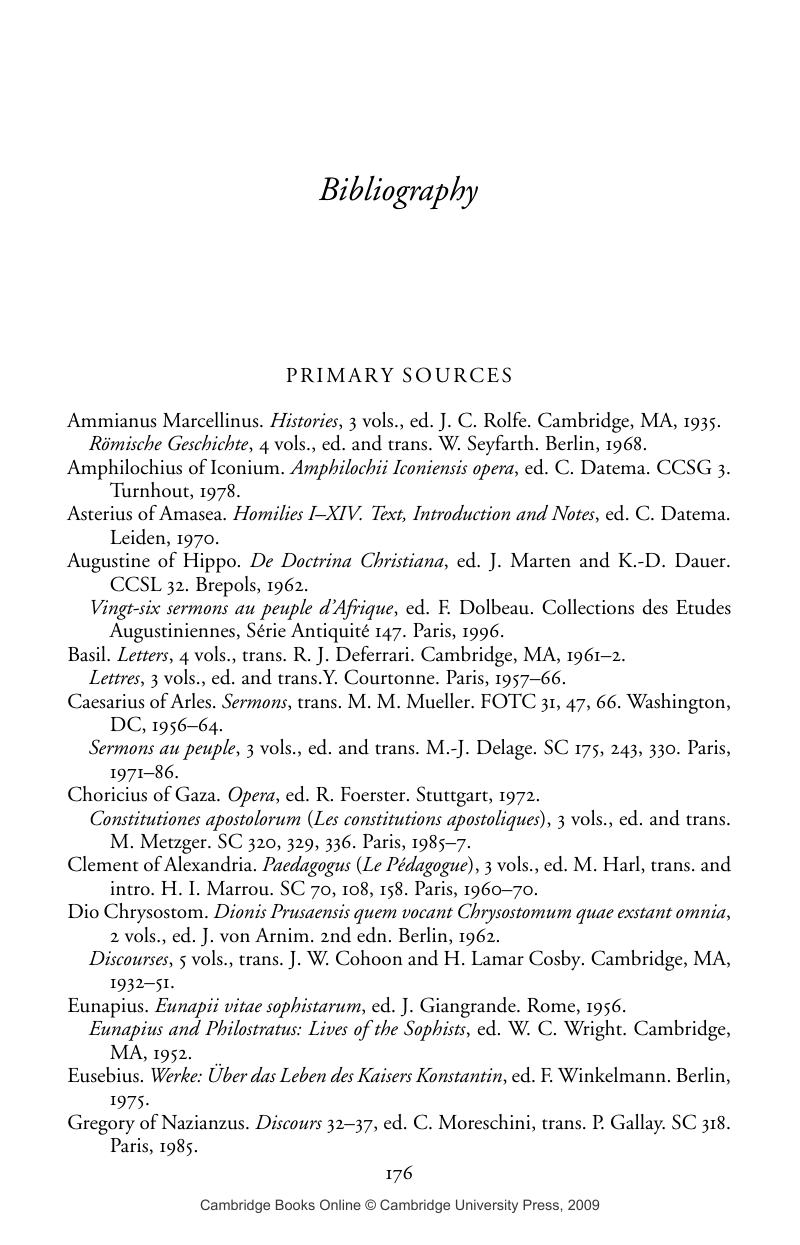 Christianization and Communication in Late Antiquity
Christianization and Communication in Late Antiquity Book contents
- Frontmatter
- Contents
- Acknowledgments
- List of abbreviations
- Introduction
- Chapter 1 Philosophical preaching in the Roman world
- Chapter 2 Rhetoric and society: Contexts of public speaking in late antique Antioch
- Chapter 3 John Chrysostom's congregation in Antioch
- Chapter 4 Teaching to the converted: John Chrysostom's pedagogy
- Chapter 5 Practical knowledge and religious life
- Chapter 6 Habits and the Christianization of daily life
- Conclusions
- Bibliography
- Index
- References
Bibliography
Published online by Cambridge University Press: 22 September 2009
- Frontmatter
- Contents
- Acknowledgments
- List of abbreviations
- Introduction
- Chapter 1 Philosophical preaching in the Roman world
- Chapter 2 Rhetoric and society: Contexts of public speaking in late antique Antioch
- Chapter 3 John Chrysostom's congregation in Antioch
- Chapter 4 Teaching to the converted: John Chrysostom's pedagogy
- Chapter 5 Practical knowledge and religious life
- Chapter 6 Habits and the Christianization of daily life
- Conclusions
- Bibliography
- Index
- References
Summary

- Type
- Chapter
- Information
- Christianization and Communication in Late AntiquityJohn Chrysostom and his Congregation in Antioch, pp. 176 - 193Publisher: Cambridge University PressPrint publication year: 2006


